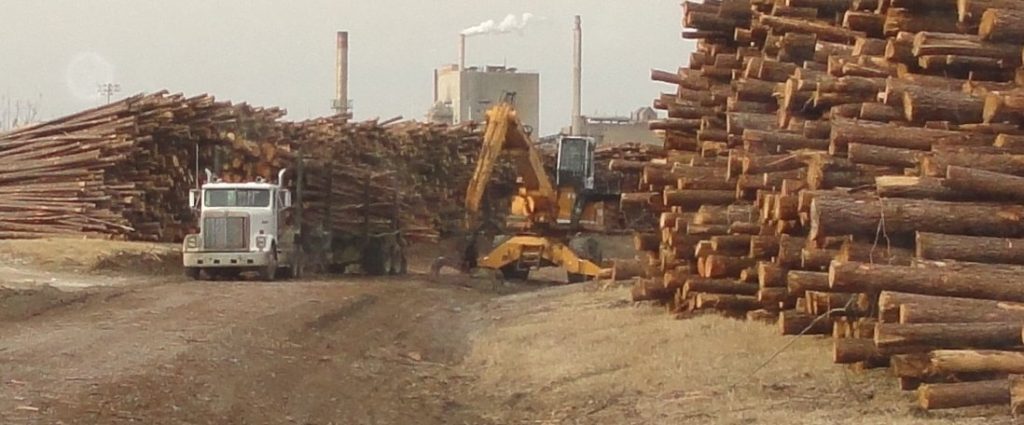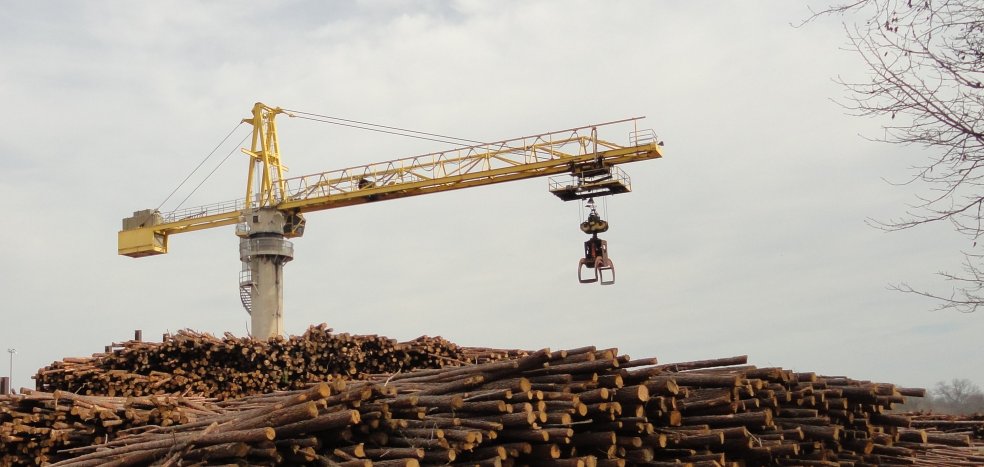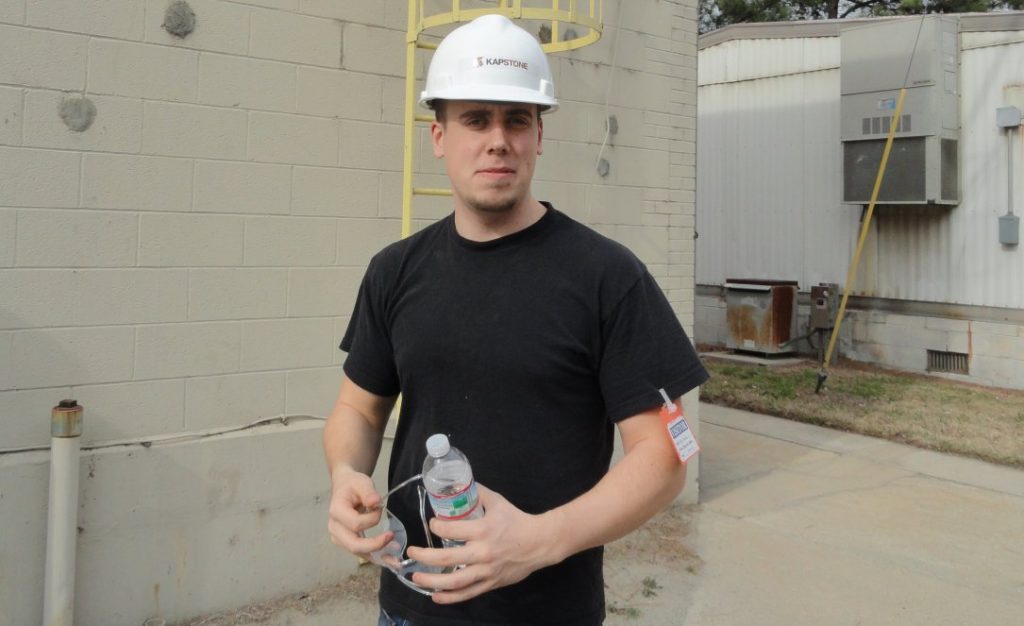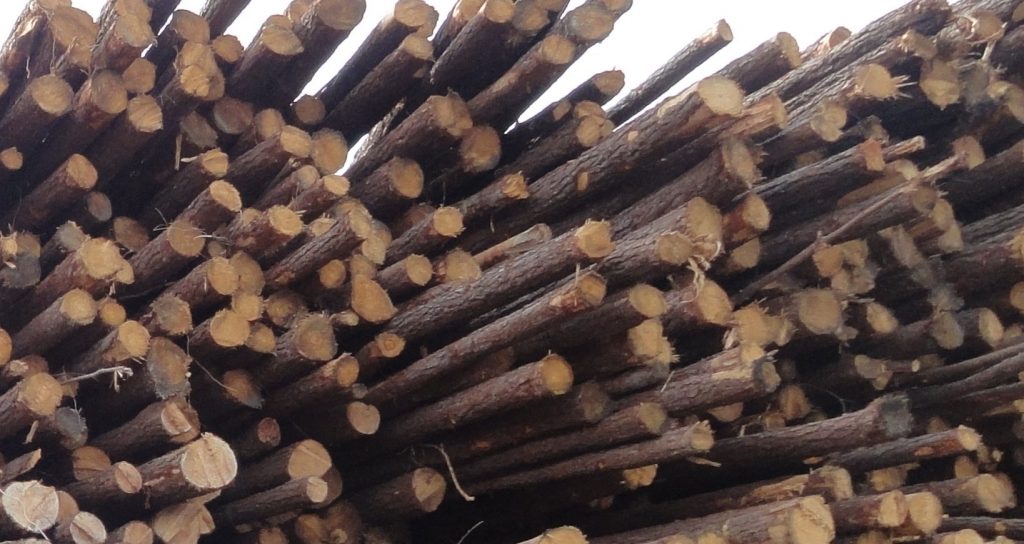
Forestry is special in its commitment to long-term stewardship and sustainably. I got involved in forestry because I love almost everything about it. I just feel happier in the woods. Alex has been coming with me on some of my visits. He commented that everybody seems happy in the woods and I think they are. The foresters are happy, so are the wildlife biologists, loggers and landowners.

Forestry provides a great combination between short term efforts and long term dreams. You get an uncommon combination that includes choices & accomplishments you can make along with something much bigger, on which all our success depends, that we can spend a lifetime trying to understand. I don’t have musical or artistic talent. I feel I have a kind of expression like those things in nature. I understand that my forest is part of a something bigger. I checked out where the water that ran off my land ended up. I posted stories about my harvesting and planning for future forests. A couple days ago I got to see where the thinned trees go and how they turn into paper products.

The trees harvested off my land last month went to KapStone Paper Mill in Roanoke Rapids, North Carolina. The mill has been there since 1907, although not under the same ownership. The mill takes only pine and makes the kind of brownish paper used for bags and packing materials. Next time I buy a bag of Kingsford charcoal, maybe the bag will have some of my fiber in the paper. They produce paper with something called the Kraft process. You can read about it at the link. The Kraft process uses a wider variety fiber sources than most other pulping processes. The important part for me is that it can use all types of wood, including the resinous southern pine that we grow.

They start off chipping the trees. The chips are heated and treated chemically. For the details of how this works, check out the link I mentioned above. They brought out three cups of fiber and water from various stages of refinement. The liquid was a kind of brownish color. I couldn’t help but think of the time Chrissy & I visited the Jim Beam distillery. They both have a kind of mash. Of course, it was not the same thing in any other sense and there was no tasting at the end of this tour.

Paper making today is capital intensive and minutely coordinated. The big machines – They give them names, BTW, one called the Dixie Queen, for example – represent a big investment. There is not much warehouse space to store the finished product, so everything runs through as quickly as possible. Trucks and trains are standing by to take away the rolls of paper as soon as they are good to go. Other inputs are also ready just when they need to be. The mill uses only virgin wood fiber to make paper, i.e. there is no post-consumer content. Lots of the chemicals used in the paper process are recycled over and over again. It is all a chain, with one event depending on the ones before, and since any stoppage is very expensive, they spend a lot of time making sure nothing breaks down. It doesn’t take many employees to make the plant run. It surprises me every time I visit a modern facility. Factories were full of workers when I started working back in the early 1970s. Historical pictures and movies tell me that they were even more crowded before that. Parts of the KapStone facility obviously were designed for lots more workers, necessary with older technology.
The best part of the tour for me was visiting the guys working on the lines. It is the kind of thing that restores your faith in the American worker. I met skilled and involved workers at every step. They understood not only their own jobs, but evidently how what they did fit into the whole picture. And they were eager to explain how everything worked.
Most of the operation is computerized these days. The paper runs past at around 30MPH. One of the guys explained that at that speed any little thing can cause a break, but the cause of the break will be way down the line. They have cameras constantly recording the process, so they can go back until they find the place where it went wrong. This allows them to continually improve the process. One of the guys said something that was basic quality-control but worth repeating. Results are what count, he said, but in order to get good results you have to have a process that you can observe study and improve. If you have the guys on the line articulating things like this, you know that your colleagues are really on the team.
Paper-making requires lots of water. The water comes from the Roanoke River. The Roanoke river discharges into the Chowan and then into Albermarle Sound, the same places the water from my farms ends up. I know it is silly but I feel a little propritary about it and I wanted to make sure the water was okay. They showed me their water treatment facility. During the short tour, I didn’t look at it in great detail. It has the usual settling, aeration & filtering. It was a serious operation. Remaining solids were deposited in a landfill on the site, which provides good wildlife habitat. Our guides told us about improvements to the paper-making process that allow more paper to be produced with less waste. As a result, the landfill is filling up much less rapidly than anticipated. The KapStone plant produces much of its own energy, producing energy from wood residues and from “black liquor,” a residue that remains after the paper-making process. In the old days, Black liquor used to be dumped into rivers and streams. Today it is a valuable biofuel that helps power the plant. After the black liquor has been burned off, chemicals used in the paper-making process are recovered from the ash and recycled. The KapStone plant relies on renewable biofuels for about 60% of its energy needs.
I was satisfied with KapStone’s commitment to the environment. It is important to me to know that my trees are grown, harvested and processed in an acceptable way. I can watch the growing part myself, but I have to rely on good people for the other steps. I found some.
There are three things that I notice when visiting industrial plants. First, as I mentioned above, I am surprised at how few people it takes to produce so much. Second, there is so little inventory. I remember working in factory warehouses groaning with products. We filled orders from accumulated stock in those days. Today the products move right through plant, from raw material to buyer. The third thing that has changed is that less is wasted, which translates into more efficient production and less pollution (which is waste, after all.)
Let me tell you about the pictures. The top shows a truck loading pulp to move in the yard. Below is a stationary crane that can move the wood around. Those are obvious, but the third picture down is a little harder to recognize. It is a “de-barker” and it works very simply. The logs go inside and roll around against each other. It knocks most of the bark off. Below the de-barker is Alex, all grown up and manly looking. The last picture is just stacked wood. I just thought it looked cool.
Here are some related links
Nucor – another great North Carolina firm with great workers
